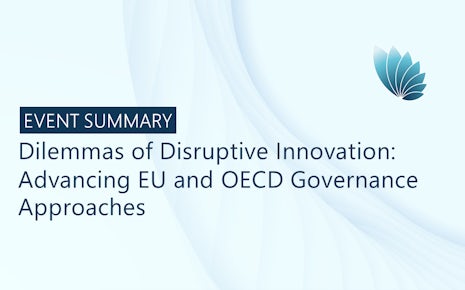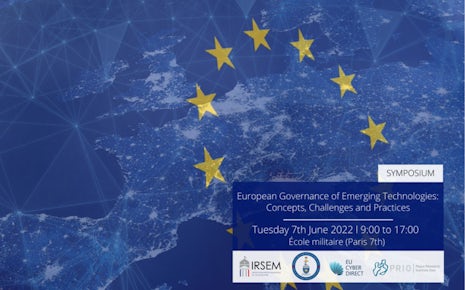Europe’s digital future cannot hinge on Washington’s whims or the outcome of elections every four years. To achieve a level of technological autonomy, Europe needs targeted investments and responsible innovation in key sectors.
Donald Trump’s reelection as U.S. president is a critical wake-up call for Europe’s technological policy. Brussels must choose between securing technological sovereignty or remaining dependent on foreign-controlled emerging and disruptive technologies (EDTs) like artificial intelligence (AI), quantum technologies, and digital platforms.
The EU needs to seize its technological sovereignty by rejecting the blind replication of the U.S. tech innovation model and forging a unique path rooted in responsible digitalization, societal cohesion, and democratic values. This will demand investments in critical industries and infrastructures, strategic partnerships, and the political capital to enact robust regulations despite potential backlash from the incoming Trump administration.
Europe has long been playing catch-up in EDTs. In a report released in September 2024, Mario Draghi, former president of the European Central Bank and one-time Italian prime minister, painted a bleak picture of a continent bogged down by outdated industrial structures.
The report identifies a “middle-tech trap” ensnaring European firms like the automotive sector and Europe’s lag in AI and quantum technologies. Compared to the United States and China, the EU trails in AI and quantum technologies due to low private funding, fragmented markets, and regulatory burdens. These fields will shape critical industries—defense, healthcare, and energy—and are essential for Europe’s autonomy in the global tech race.
Yet, the EU is hamstrung by lagging research and development and the lack of innovative tech firms capable of scaling globally. European tech start-ups often need to cross the Atlantic to scale, drawn by the deep pockets of U.S. investors. Weak European capital markets, fragmented and risk-averse, fail to provide the financing needed for global competitiveness. This leaves the bloc dependent on U.S. venture capital to support its most promising EDT innovators.
The incoming European Commission has signaled the strategic importance of this field by appointing Finland’s Henna Virkkunen as the next executive vice president for tech sovereignty, security, and democracy. But it remains to be seen how the EU’s new leadership will interpret the concept of technological sovereignty and, more importantly, how it will operationalize it.
Europe’s path forward hinges on four critical lessons from its current technological challenges and dependencies.
First, technological dependencies on foreign players increasingly pose a security risk. The EU’s reliance on U.S. technology—spanning advanced semiconductors, AI systems, and cloud services—presents a significant challenge. U.S. tech export restrictions or misuse of tech platforms, such as Elon Musk’s increasingly assertive X platform and closeness with President-Elect Trump, exemplify such vulnerabilities to foreign influence.
Europe’s dependence on U.S. digital platforms undermines its strategic autonomy and risks sparking regulatory conflicts, particularly under frameworks like the bloc’s Digital Services Act, which aims to clamp down on illegal and toxic content online. Brussels will likely come under pressure to prove its Big Tech regulatory resolve, despite the potential conflict with the incoming Trump administration which keeps close ties with some of the biggest tech players in the United States.
Second, the EU must establish its homegrown critical digital industrial platforms and infrastructures to curb its reliance on U.S. tech firms. U.S. cloud service providers dominate the European market, and the union will need to balance data security with economic growth. Large-scale EU-wide collaborations, such as establishing robust data centers, are essential, whereas public-private partnerships can play a pivotal role in scaling critical EDTs.
The EU should also be prepared to address challenges like antitrust enforcement, content moderation, and environmental impact directly within the EU. To foster thriving venture capital (VC) for deep tech in Europe, a differentiated approach from the U.S. model is equally crucial. It should be tailored to Europe’s unique market characteristics, regulatory landscape, and cross-border innovation ecosystem.
Third, the EU should avoid blindly replicating U.S. models. Driven by private capital and lax regulations, the United States’ unrestrained digitalization and tech innovation model have caused significant democratic and societal harm. With its focus on social welfare, data privacy, and human rights, Europe must reject this path and instead pursue a responsible and inclusive approach.
Policy alignment between Brussels and Washington on the responsible and democratic governance of EDTs like AI is bound to fray. Unchecked, technological giants have fueled societal fragmentation, disinformation, and job insecurity—all factors exploited in Trump’s political appeal. As the Draghi report suggests, in the long term, chasing U.S. tech prowess at all costs against the backdrop of the global innovation and competitiveness race might do more harm than good.
Fourth, the EU should leverage regulation for competitive advantage. Digitalization should foster democratic values rather than undermine them. Europe’s strong regulatory framework—on human rights, data privacy, AI ethics, inclusion, and sustainability—can be a strategic asset at home and in international multilateral fora, favoring stability and inclusion over rapid, profit-driven tech expansion.
That is why Brussels must chart a unique course—one that emphasizes responsible digitalization, societal cohesion, economic security, and public welfare. High standards can attract companies that value compliance, positioning Europe as a global leader in responsible technology and setting benchmarks for the world.
As the EU charts its digital future under a new Trump administration, it should focus on targeted investments and responsible innovation in key sectors like dual-use AI systems, quantum computing, manufacturing, semiconductors, energy and space technologies, and advanced connectivity.
Europe’s digital future cannot hinge on Washington’s whims or the outcome of elections every four years. While transatlantic ties remain vital, Europe should strengthen partnerships with like-minded nations and regions. This will help the bloc secure supply chains, fortify resilience, set global benchmarks for responsible tech governance, and avoid being at the mercy of foreign interests.



